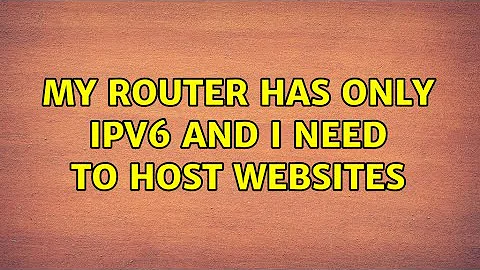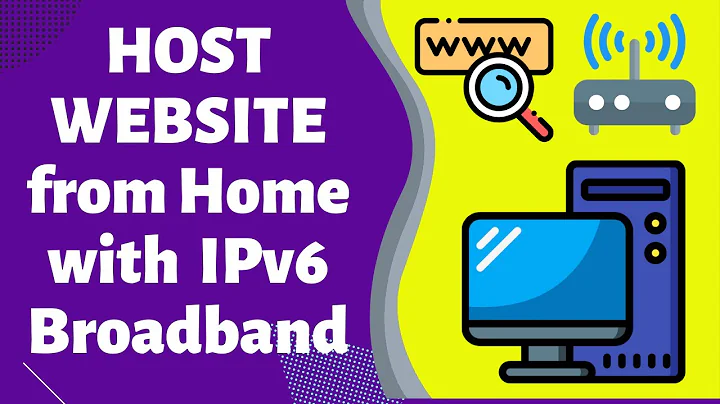My router has only IPv6 and I need to host websites
With IPv6 you have billions and billions of addresses. A /64 means that the first 64 (of the 128 bits of an IPv6 address) are fixed and the remaining bits are available to use. A /64 has 18,446,744,073,709,551,616 addresses to be precise. IPv6 doesn't use NAT so there is no difference between internal and external addresses. The only difference is that there is probably a firewall between your network and the outside world to filter what gets in and out. The addresses themselves aren't changed in transit. Every IPv6 address is directly accessible from the outside world if the firewall allows it.
The problem you are going to encounter is that unfortunately most of the world doesn't have IPv6 yet. It is coming (Belgium already passed the 20% mark) but not available everywhere yet. Because IPv4 and IPv6 are two different protocols they don't talk to each other. That means that if you only have IPv6 to host your website on then only users who have IPv6 can access it. If the user only has IPv4 (still the vast majority) then they won't be able to access your website.
This is why these days websites and other services have to be dual-stack: supporting both IPv4 and IPv6 at the same time so that everybody can access them. Your internet connection hopefully has both IPv4 and IPv6. If you have your own IPv4 address then use that address for your website. If you don't have your own IPv4 address (and this happens more and more because IPv4 addresses are scarce (which is why IPv6 was invented) so IPv4 is getting expensive and IPv4 addresses have to be shared) then you can't run a webserver on it and most people will be unable to access your website.
Related videos on Youtube
Comments
-
Jack Twain over 1 year
I have never dealt with IPv6. Today I got my internet installed from an internet company and they brought the router. When I accessed the router to see its public ip address, I found that there is only IPv6 address. One that ends with
/64and another that ends with/128. I have no idea about the difference between them.Well the main thing I'm trying to do is that I want to have a server to host websites on it. At least one website for the moment. As I know is that I should put the ip address of my router in the domain configurations of my domain name. Then I should instruct the router to forward any HTTP requests to my server via port forwarding or something. As far as I know all domain providers only support IPv4. So how to go around this problem?
-
 kasperd about 8 years@Ramhound It is entirely possible that the router has two or even more IPv6 addresses. But those are not the ones that need to be used anyway. Port forwarding is a workaround you only need with IPv4. With IPv6 you need to use the IP address of the actual server, not of the router.
kasperd about 8 years@Ramhound It is entirely possible that the router has two or even more IPv6 addresses. But those are not the ones that need to be used anyway. Port forwarding is a workaround you only need with IPv4. With IPv6 you need to use the IP address of the actual server, not of the router.
-
![How To Host Your Own Website For FREE - Home Server Tutorial [2021]](https://i.ytimg.com/vi/b50hB7cfsfg/hq720.jpg?sqp=-oaymwEcCNAFEJQDSFXyq4qpAw4IARUAAIhCGAFwAcABBg==&rs=AOn4CLBbJmu5fwsQnT4lxsBpDDcFmIMHVQ)



